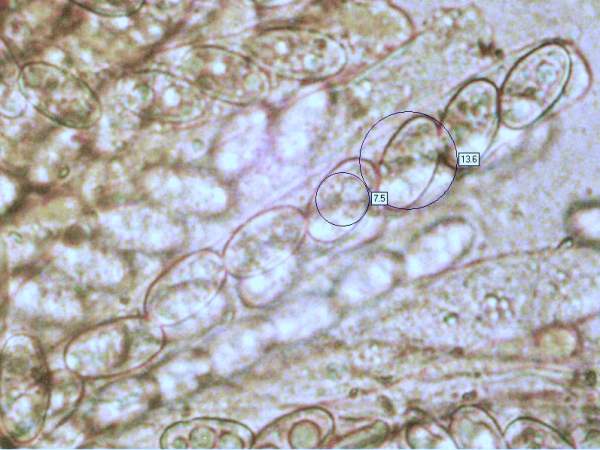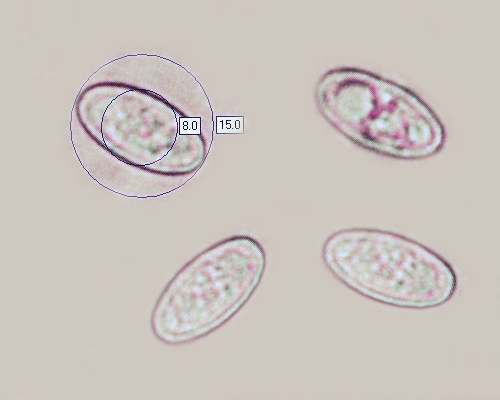Peziza violacea Pers.
Phylum: Ascomycota - Class: Pezizomycetes - Order: Pezizales - Family: Pezizaceae
Distribution - Taxonomic History - Etymology - Identification - Culinary Notes - Reference Sources
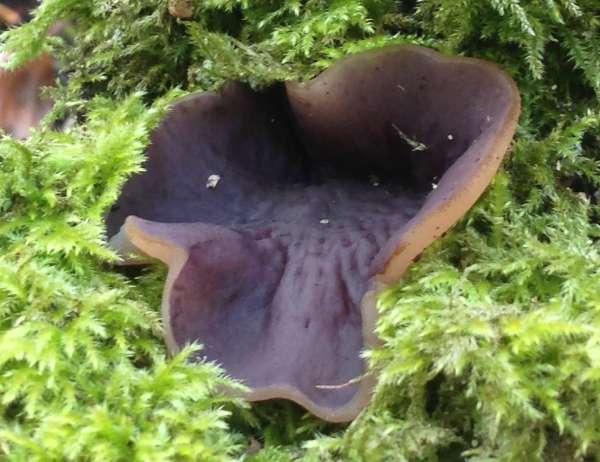
Cup fungi, and dark brownish ones in particular, are particularly difficult to identify with certainty; however, Peziza violacea is distinctive not merely because of its purplish colouring but also because of the way it develops into a scalloped cup at maturity. The fertile surface is inside the cup, as with all Peziza species. (The first time I saw dark Peziza I wrongly assumed that it was the empty dried-up case of an earthball, but there was no sign of any of the spore mass inside and yet clearly it was not a particularly old fruitbody.)
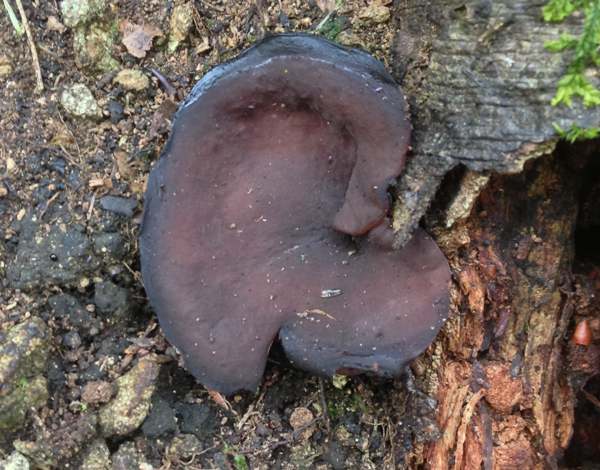
As gusts of wind blow across the top of the cup, the resulting change in air pressure triggers the discharge of ripe spores from within their asci flasks; the spores are then carried away on the breeze - a cunning system for releasing spores at those times that are best for their long-range distribution!
Distribution
Peziza violacea is an uncommon find in Britain, where it occurs on soil in broadleaf and mixed woodlands, most often on burnt sites. This cup fungus occurs also in many parts of mainland Europe and in North America, where some people refer to it as the Violet Fairy Cup.
Note the much darker colour of old fruitbodies. Cups exposed to sunlight soon lose most of their violet or lilac colouration and turn brown or black; they are then easily mistaken for Peziza badia and other dark brown cup fungi.
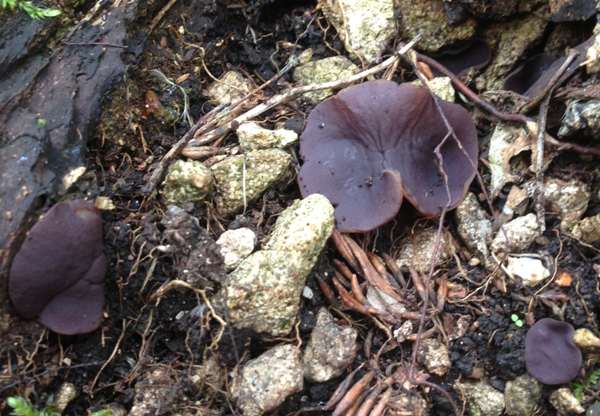
Taxonomic history
This cup fungus was described scientifically in 1801 by Christiaan Hendrik Persoon, who called it Peziza violacea - the name by which it is still generally known today.
Synonyms of Peziza violacea include Aleuria violacea (Pers.) Gillet, and Humaria violacea (Pers.) Sacc.
Etymology
Peziza, the genus name, may come from a Latin root referring to a foot - most fungi in this group being sessile (footless or stemless). The specific epithet violacea refers to the violet color of the fertile surface of this cup fungus.
Identification guide
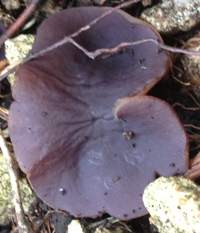 |
FruitbodyStemless (or with a very short inconspicuous stem) cup fungus, initially hemispherical, opening to form a shallow cup, usually developing a scalloped rim; 1 to 4cm across. The inner surface is often sslightly wrinkled, most noticeably in the central region. The cup flesh is whitish and 0.5 - 2mm thick. Violet to deep lilac when young, the hymenium (the fertile upper surface) turns brown with age and exposure to daylight; its surface is smooth and waxy. |
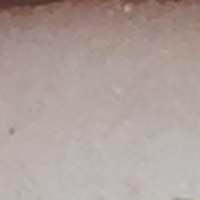 |
The infertile lower surface is pale lilac when young, becoming whitish or pale tan when old. The surface texture is finely granular/fufuraceous.
|
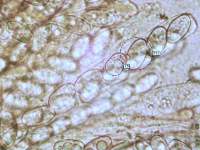 |
AsciCylindrical, typically 200-250 x 10-15µm; eight-spored. ParaphysesParaphyses clavate, widening only slightly towards the tips to a diameter of 5-8µm, often slightly curved; contents grainy, brownish-purple. |
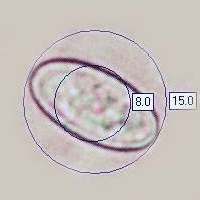 |
SporesEllipsoidal, smooth, 13-15.5 x 7.5-8.5µm. Spore printWhite. |
Odour/taste |
Not distinctive. |
Habitat & Ecological role |
Peziza violacea is a saprophyte and occurs on damp soil in broadleaf and mixed woodlands, very often on burnt ground. |
Season |
Any time of year. but mainly October to April in Britain and Ireland. |
Similar species |
There are at least 100 Peziza species and definite identification is rarely possible without microscopic examination, but the distinctive purplish hymenium of Peziza violacea greatly limits the number of possibilities. |
Culinary Notes
This cup fungus is not considered edible. It is most probably poisonous if eaten raw or inadequately cooked, when it could at least cause seriously unpleasant stomach upsets. (The same is true even of noted edible ascomycetes such as Morchella esculenta, the Morel, and Morchella elata, the Black Morel.)
Reference Sources
Fascinated by Fungi, 2nd Edition, Pat O'Reilly 2016, reprinted by Coch-y-bonddu Books in 2022.
Dennis, R.W.G. (1981). British Ascomycetes; Lubrecht & Cramer; ISBN: 3768205525.
Breitenbach, J. & Kränzlin, F. (1984). Fungi of Switzerland. Volume 1: Ascomycetes. Verlag Mykologia: Luzern, Switzerland.
Medardi, G. (2006). Ascomiceti d'Italia. Centro Studi Micologici: Trento.
Donadini J.C. 1981. Le genre Peziza dans le sud-est de la France, avec clef du genre pour la France; Universite d'Aix-Marseille
BMS List of English Names for Fungi
Dictionary of the Fungi; Paul M. Kirk, Paul F. Cannon, David W. Minter and J. A. Stalpers; CABI, 2008
Taxonomic history and synonym information on these pages is drawn from many sources but in particular from the British Mycological Society's GB Checklist of Fungi.
Acknowledgements
This page includes pictures kindly contributed by Simon Harding.
Fascinated by Fungi. Back by popular demand, Pat O'Reilly's best-selling 450-page hardback book is available now. The latest second edition was republished with a sparkling new cover design in September 2022 by Coch-y-Bonddu Books. Full details and copies are available from the publisher's online bookshop...
